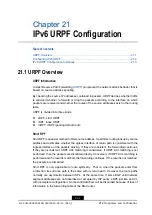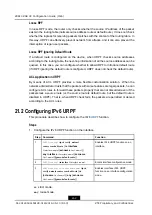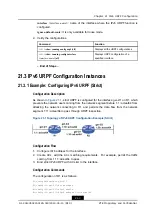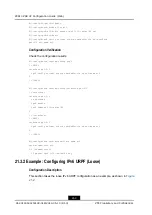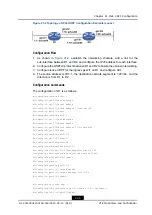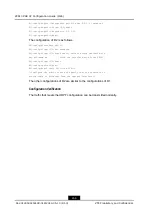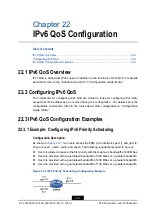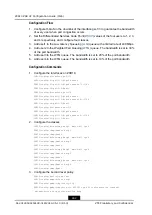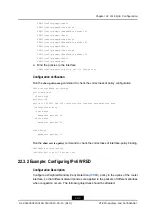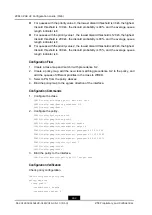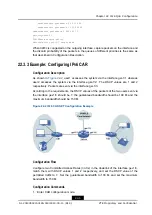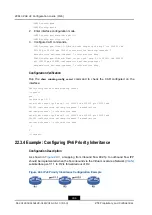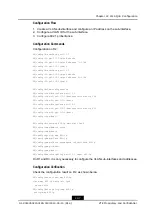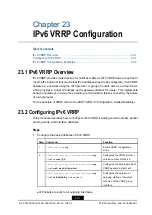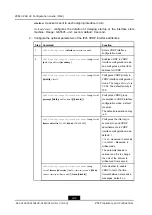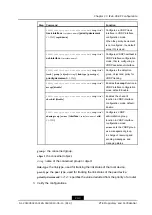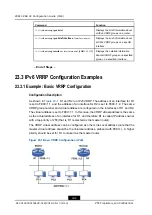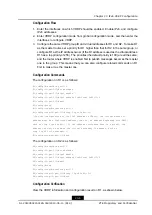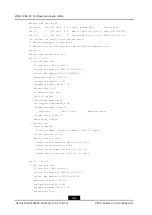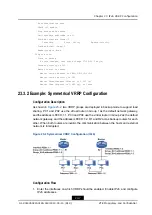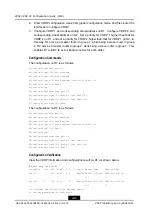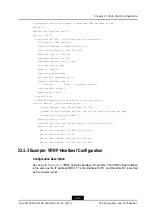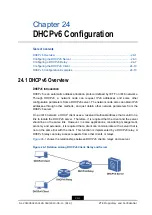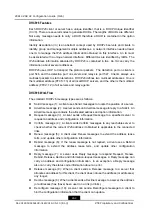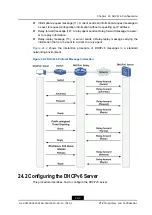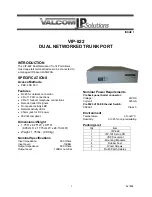
Chapter 23
IPv6 VRRP Configuration
Table of Contents
23.1 IPv6 VRRP Overview
IPv6 VRRP provides router backup for multicast LANs as IPv4 VRRP does, except that it
runs the IPv6 protocol (this means that IPv6 addresses need to be configured). IPv6 VRRP
operates in a network using the IPv6 protocol. A group of routers acts as a virtual router,
which provides a virtual IP address as the gateway address for users. This implements
backup of gateways in a way, thus avoiding communication failures caused by the failure
of a single router.
For the principle of VRRP, refer to the
ZXR10 ZSR V2 Configuration Guide (Reliability)
.
23.2 Configuring IPv6 VRRP
This procedure describes how to configure IPv6 VRRP, including version number, packet
sending mode, and interface attributes.
Steps
1.
Configure the basic attributes of IPv6 VRRP.
Step
Command
Function
1
ZXR10(config)#
vrrp
Enters VRRP configuration
mode.
ZXR10(config-vrrp-if-interface-name)#
vrrp
<
vrid
>
version
{
2
|
3
}
Configures the VRRP protocol
version number. Default: 3.
ZXR10(config-vrrp-if-interface-name)#
vrrp
<
vrid
>
send-mode
{
all
|
rotation
}
Configures the sending mode of
VRRP packets, default:
all
.
2
ZXR10(config-vrrp-if-interface-name)#
vrrp
<
vrid
>
reload-delay
<
reload-delay
>
Configures the duration of
delaying startup of the state
machine of the VRRP group
interface.
all
: Packets are sent to all outgoing interfaces.
23-1
SJ-20140504150128-018|2014-05-10 (R1.0)
ZTE Proprietary and Confidential

